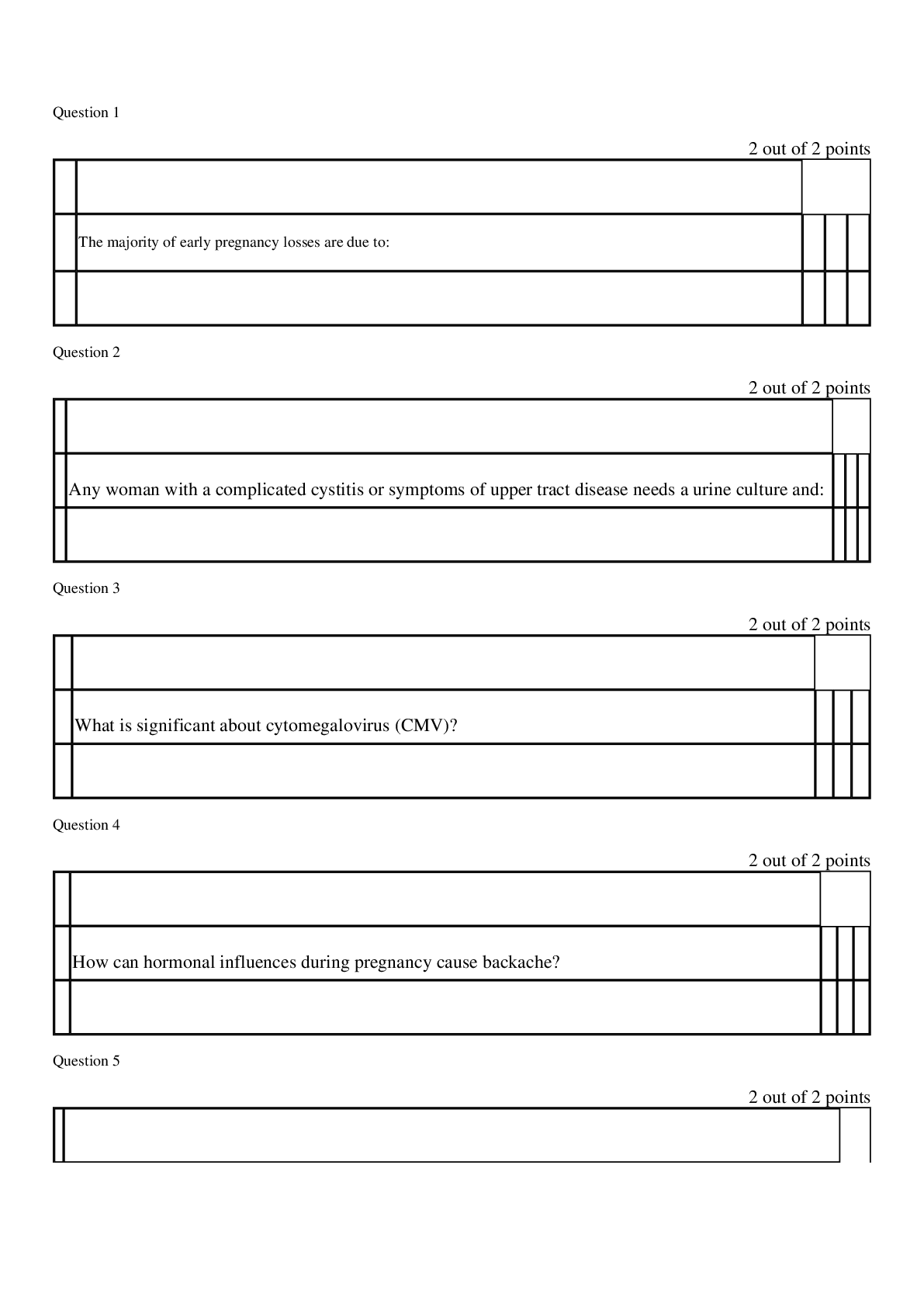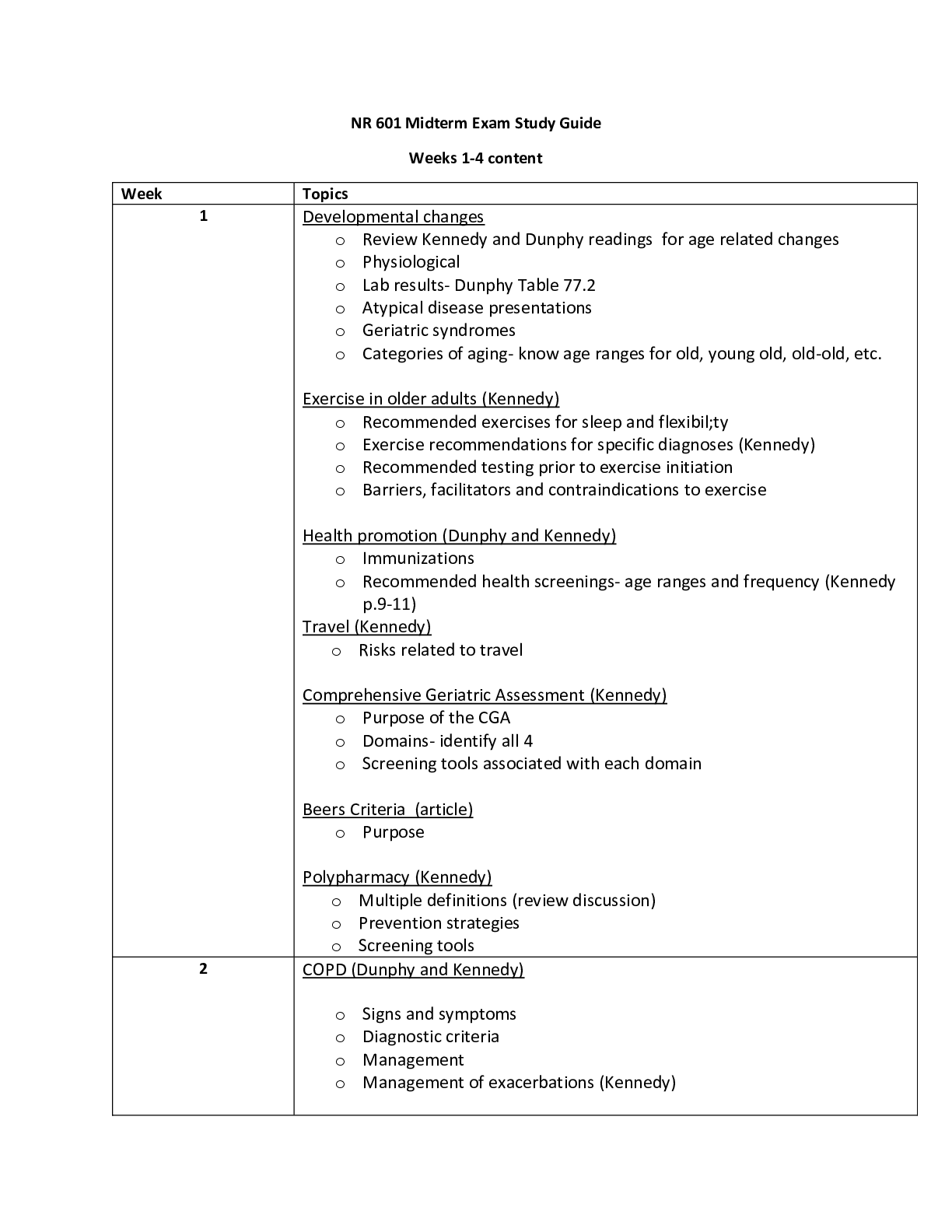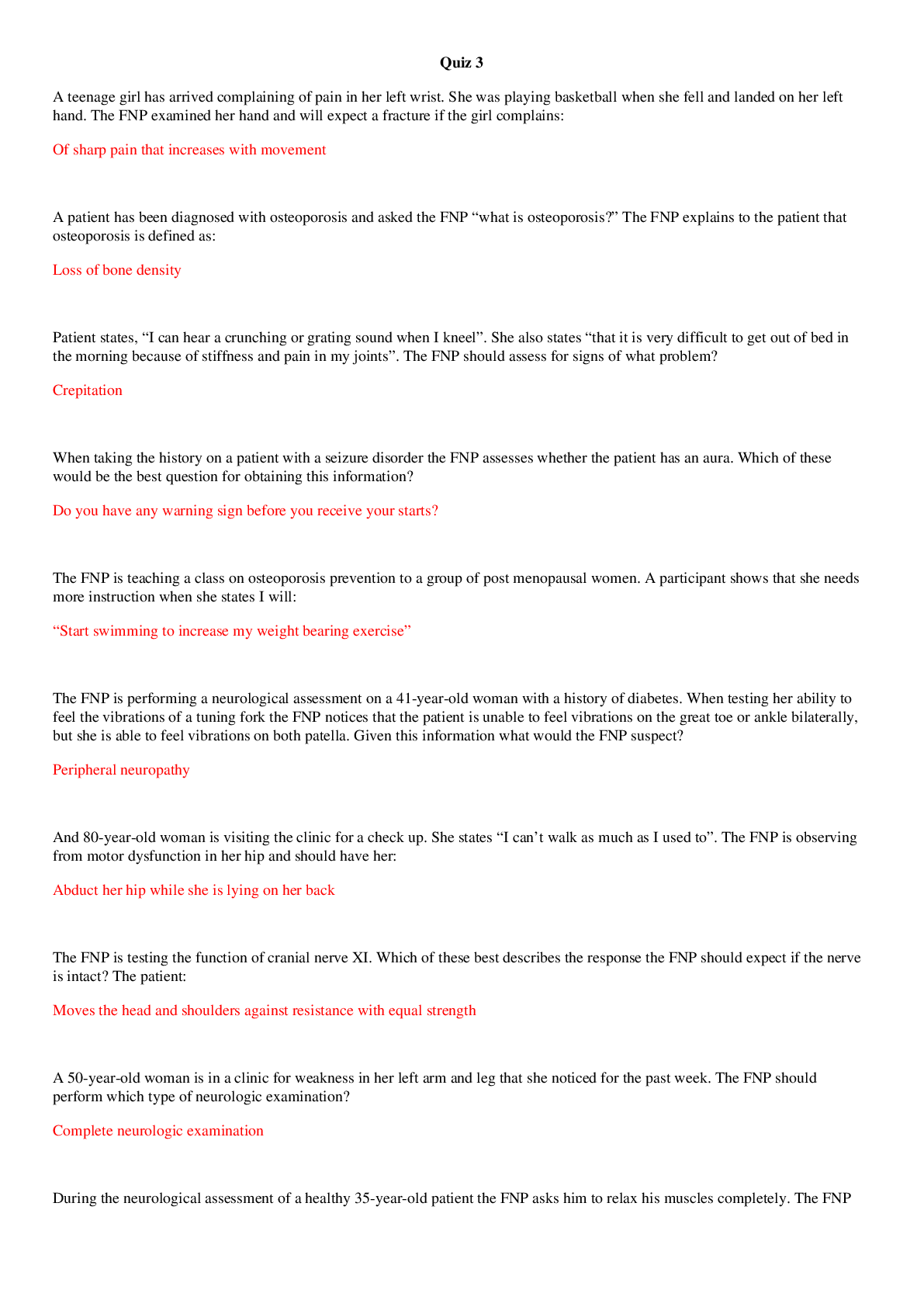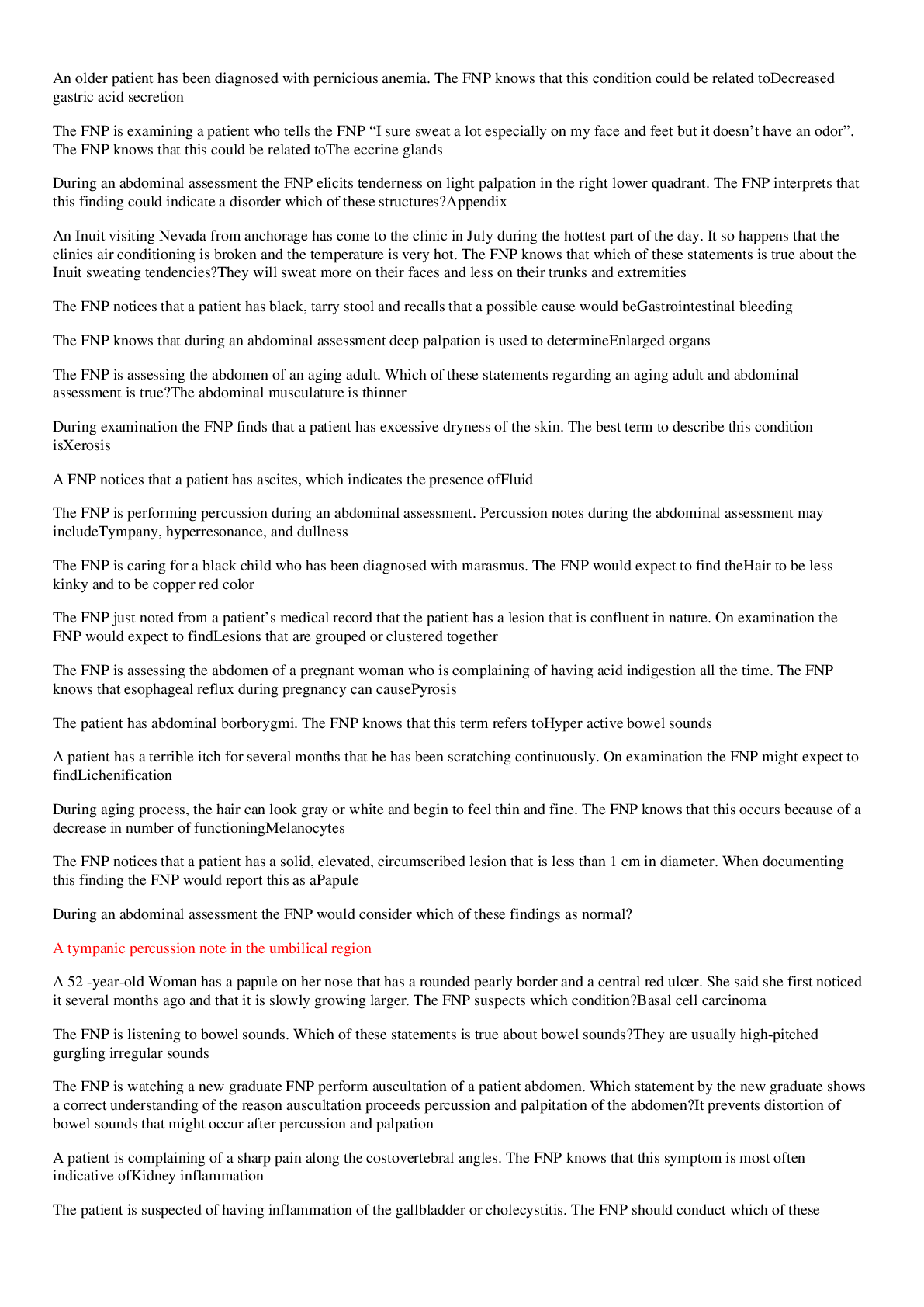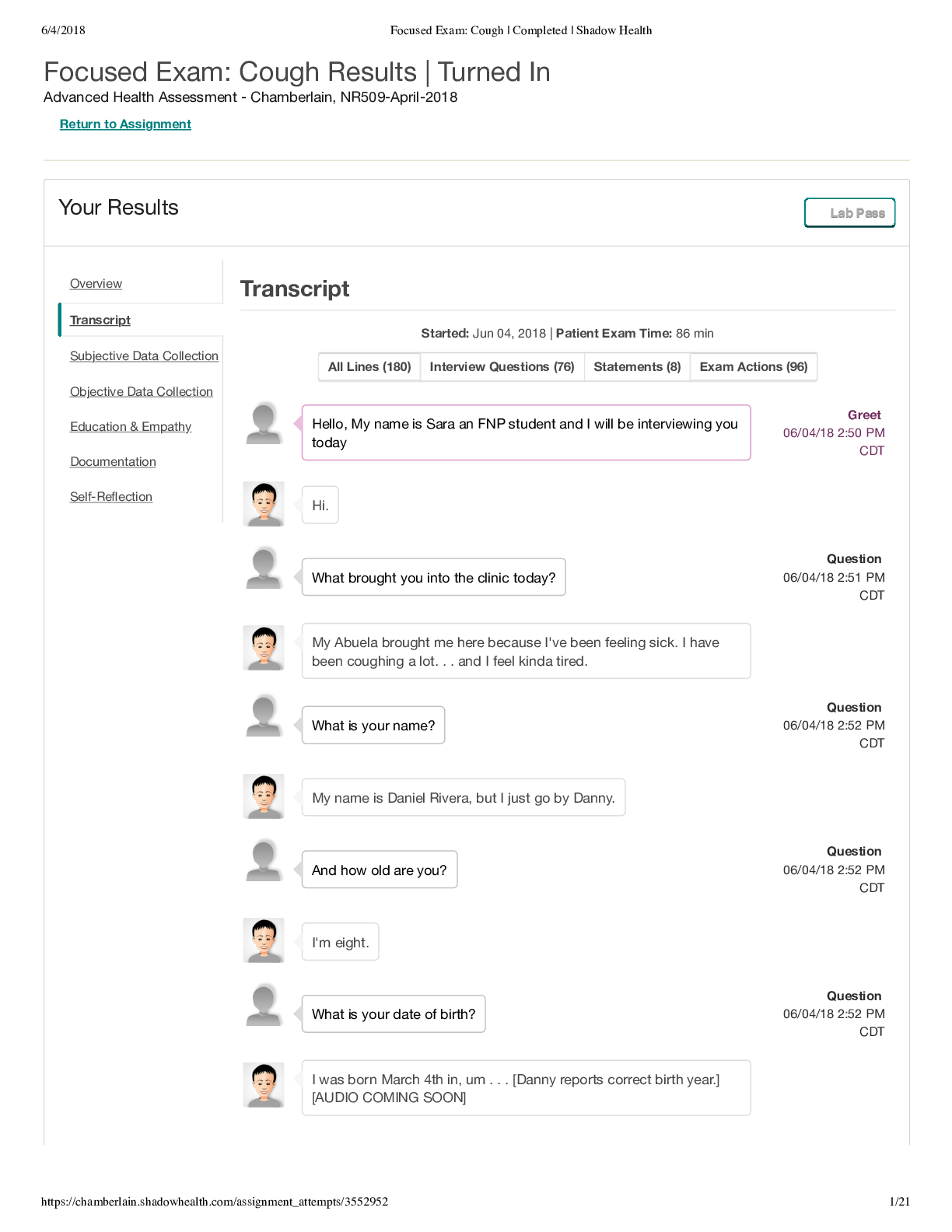*NURSING > STUDY GUIDE > Chamberlain College of Nursing - NR 509 Week 2 Quiz Complete Study Guide. (All)
Chamberlain College of Nursing - NR 509 Week 2 Quiz Complete Study Guide.
Document Content and Description Below
1. What does dullness when percussing lung fields: Jarvis pg 427 Hyperresonance is a lower-pitched, booming sound found when too much air is present such as in emphysema or pneumothorax. A dull... note (soft, muffled thud) signals abnormal density in the lungs, as with pneumonia, pleural effusion, atelectasis, or tumor. Lungs are hyperinflated with chronic emphysema, which results in hyperresonance where you would expect cardiac dullness. Dullness behind the right breast occurs with right middle lobe pneumonia. Asymmetry is important: one side with prominent dullness or marked hyperresonance indicates underlying disease. Hyperresonance is a lower-pitched, booming sound found when too much air is present such as in emphysema or pneumothorax. A dull note (soft, muffled thud) signals abnormal density in the lungs, as with pneumonia, pleural effusion, atelectasis, or tumor 2. Facial sensation controlled by which CN: Jarvis 283, the trigeminal nerve (CN V) carries the afferent sensation into the brain, and the facial nerve (CN VII) carries the efferent message that stimulates the blink. Note the facial expression and the symmetry of movement, which reflect the functioning of cranial nerve VII. Also, observe for any involuntary movements, edema, or lesions. 3. Know what two salivary glands are accessible during exam The sublingual and submandibular salivary glands are accessible to examination, but the parotid glands are in the cheeks over the mandible and are not normally palpable. 4. What CN is being assessed when pt shrugs shoulders Jarvis 646 The major neck muscles are the sternomastoid and the trapezius and are innervated by cranial nerve XI. 5. What muscles are being assessed when assessing CN 11 (spinal accessory nerve) The sternomastoid muscle divides each side of the neck into two triangles. It accomplishes head rotation and flexion. The anterior triangle extends to the mandible above and the midline of the body medially. The posterior triangle lies behind the sternomastoid muscle and in front of the trapezius. Examine the sternomastoid and trapezius muscles for equal size [Show More]
Last updated: 2 years ago
Preview 1 out of 5 pages

Buy this document to get the full access instantly
Instant Download Access after purchase
Buy NowInstant download
We Accept:

Reviews( 0 )
$12.00
Can't find what you want? Try our AI powered Search
Document information
Connected school, study & course
About the document
Uploaded On
Oct 30, 2020
Number of pages
5
Written in
Additional information
This document has been written for:
Uploaded
Oct 30, 2020
Downloads
0
Views
111











